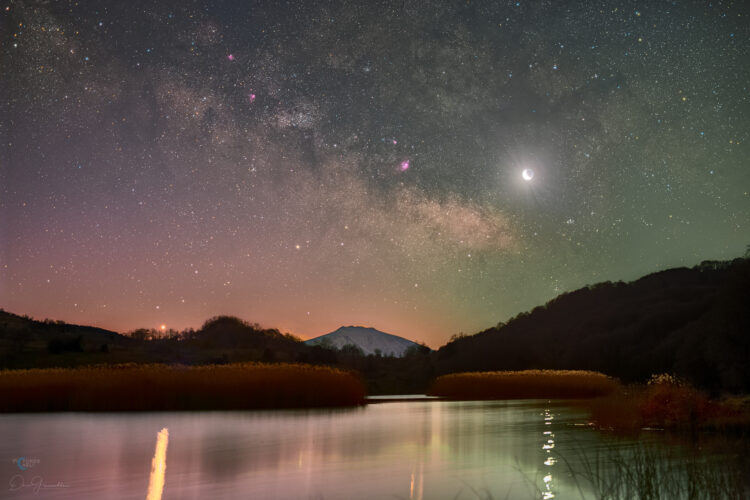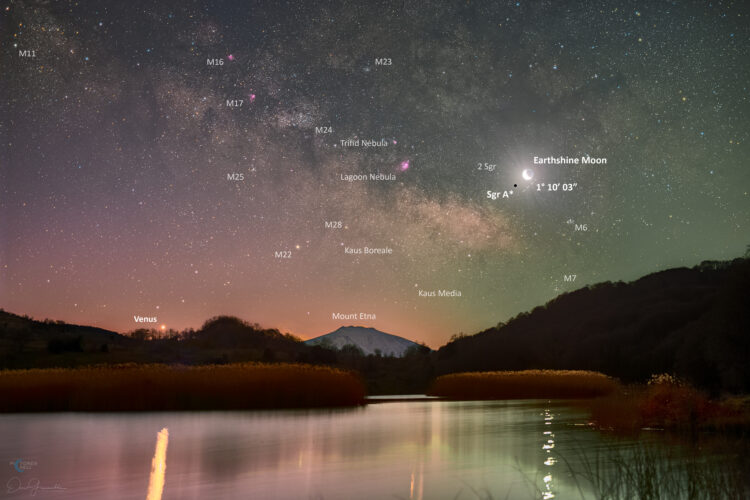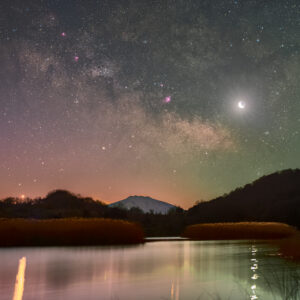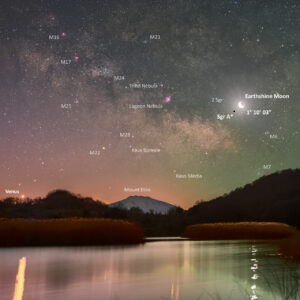Moon, Venus, and Sgr A*
Description
A photo composite of multiple exposures for the moon and the background sky. From the photographer: “This is not a simple image of the Milky Way or the Moon. It is a magical moment, little known among astrophotography enthusiasts, when it is possible to photograph the Moon in alignment with the galactic centre without losing the details of the Milky Way.
This condition is achieved provided that two requirements are met:
1. The Moon is only partially illuminated.
2. The centre of the Milky Way is in the same portion of the sky in which the Moon transits.
The first condition is necessary to prevent the moonlight from dazzling the sky, making it impossible to photograph fainter stars and deep sky objects. The best time for this to happen is when the Moon is in its waning phase, with an illumination of less than 20 per cent. Under these conditions, our satellite will rise near the end of the astronomical night. The second condition presupposes that the centre of the Milky Way is visible in the same portion of the sky, i.e., as mentioned earlier, the galactic centre must rise just before the end of astronomical night.
The two conditions occur only once a year, between January and February.
In this photograph, the Moon is in close conjunction with the galactic centre, where the black hole Sgr A* resides. The two objects are separated by a perspective distance of just 1° 10‘ 03’! As far as the landscape is concerned, it is the Biviere di Cesarò lake located at about 1,200 metres above sea level, surrounded by the Nebrodi mountains. Small islands of lake reeds grow in its waters, above which the volcano Etna rises. At lower left, the image is enriched by the presence of Venus, who casts her reflection on the lake’s placid waters.”
Technical details:
Canon 6dmod, Sigma 50mm, f/2, iso 3200, 6 sec x 27 + 0.5 sec, iso 200 for the Moon




comments (0)